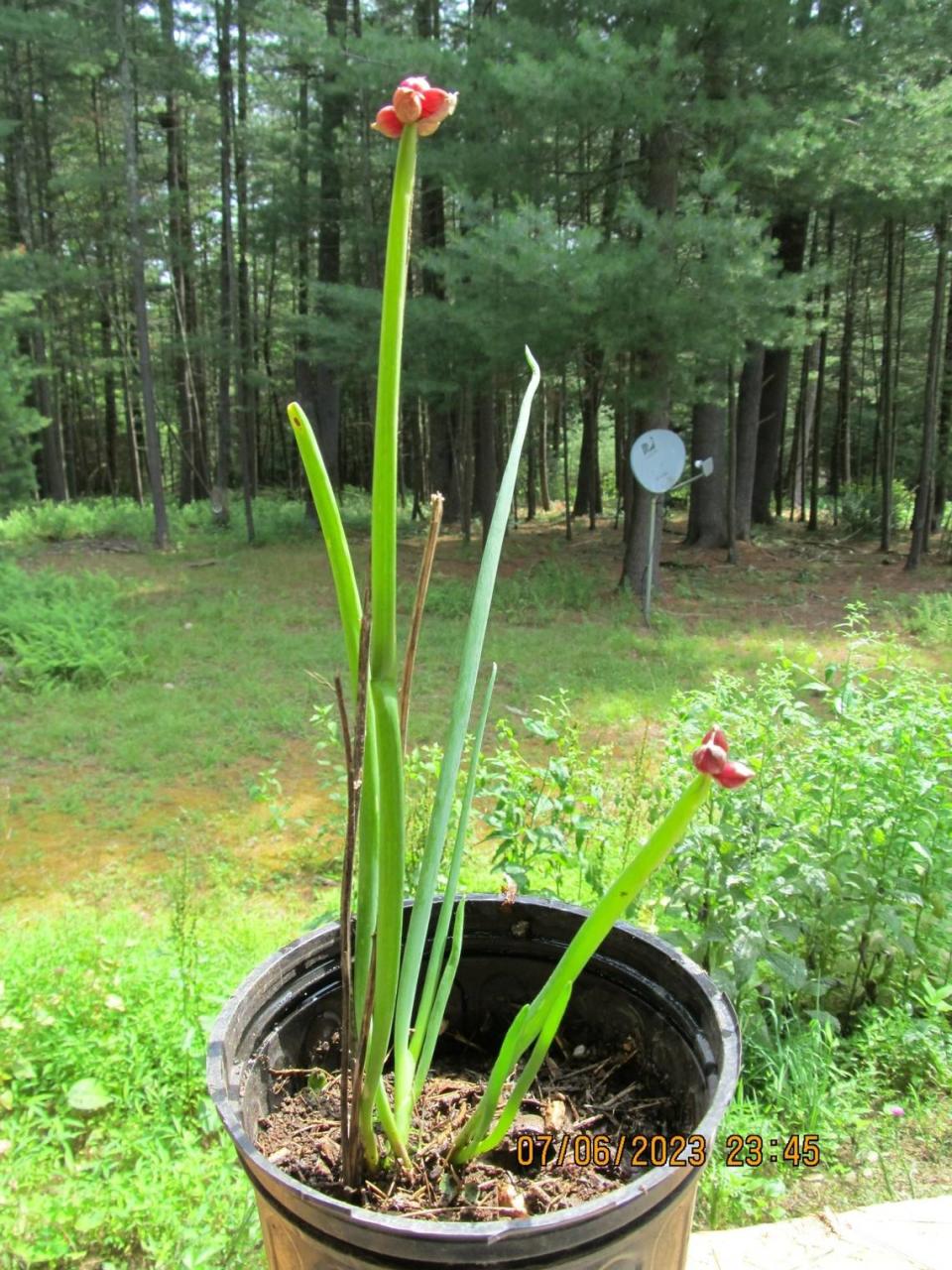Over the garden fence: What to know about growing Egyptian Walking Onions
I was talking with my friends — Mary, who is an excellent waitress at the Waffle Shop on North Atherton Street, and Tommy, who does the piano bar at the American Ale House plus a host of other interesting jobs — about the interesting Egyptian Walking Onion that I have growing in my garden, and I thought others might be interested too.
As their scientific name “Allium proliferum” states, these hardy little onions are prolific. Once you plant them in your garden you will have onions every year. Egyptian Walking Onions are also called Tree Onions, Egyptian Tree Onions, Top Onions, Winter Onions, Perennial Onions.
Egyptian Walking Onions are one of the first plants to emerge in the spring. The leaves poke up through the soil like little green spikes despite the frost or snow. The blue-green leaves are round and hollow and will grow up to 3 feet in height. At the end of the leaf stalk, a cluster of bulblets will begin to grow. These bulblets are also known as “bulbils” or “sets.” Every Egyptian Walking Onion plant will produce a cluster of sets at the top, hence the name, “Top Onion,” meaning they are top setting onions.
Egyptian Walking Onion top sets first appear in the early spring encased in a protective papery tunic, which has a curled tip like an elf’s shoe. As they grow, this papery capsule will tear open and eventually fall off. The top sets reach maturity in late summer. Many of them have little green sprouts and mini root nodules. When the sets become heavy enough, they will pull the plant over to the ground. If the soil conditions are right, the fallen sets will take root and grow new onion plants, hence the name, “Walking Onion.”
An Egyptian Walking Onion set looks like, and essentially is, a miniature onion. Sets produced by these plants are generally smaller than the ordinary annual garden-variety onion sets. They range in size from 1/4 inch to 1 inch in diameter. Each cluster can have as few as 2 sets, or as many as 30 sets. Sometimes a new leaf stalk will emerge from a cluster of top-sets like a branch, and a second cluster will grow from it, hence the name “Tree Onion.”
In the ground, the Egyptian Walking Onion plant produces a small shallot-like onion that can be harvested. Once harvested, however, the plant will obviously not grow back. If left in the ground, the onion will produce offsets and form a group of onions. New leaves and top sets will grow from the onions each year. The Egyptian Walking Onion is a perennial onion.
Plant each “set” in the soil about 1-2 inches deep in full sun. Soil should be slightly moist and well drained. Plant in rows about 1 foot apart with the sets spaced 3-6 inches in the row. The optimal time to plant them is fall so they can develop a strong root system and be ready for good growth the following spring. These onion sets will not produce top sets during their first year of growth. Top sets will grow during the plant’s second year and every year thereafter. Once established, plants may be propagated by division or by planting the sets that grow from the top. They are extremely hardy and can survive temperatures down to -24 degrees below zero, hence the name “Winter Onion.”
In mid to late summer and autumn the top sets may be harvested. The optimal time to harvest the top sets is when the leafstalk has dried and turned brown. Be sure to remove any top sets that have fallen to the ground to prevent them self-sowing.
Egyptian Walking Onions taste just like regular onions, only with a bit more zip. The entire plant can be eaten. Small onions forming at the base in the soil can be eaten and prepared just like any other onion. The hollow greens may be chopped to eat like chives or green onions. The bulblets that grow from the top are excellent when peeled and fried or you can pickle them or just eat them like popcorn but remembering they are a little spicy. Next time I am in the Waffle Shop, I will have to ask Mary and Tommy how their Egyptian Walking Onions are doing.
Bill Lamont is a professor emeritus in the department of plant science at Penn State and can be reached by e-mail: wlamont@psu.edu.



